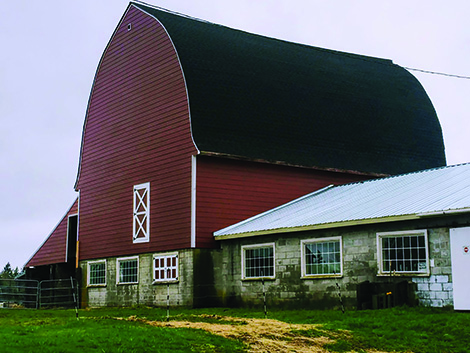Iconic buildings and people in the Auburn and Enumclaw areas are in the spotlight as recipients of the latest John D. Spellman Awards for historic preservation in King County.
The award Is named for the former King County executive and Washington governor, who died in January 2018. Spellman became a champion of the county’s history when he helped start its Historic Preservation Program 40 years ago.
County Executive Drew Constantine and others honored the new award winners during a celebration last October at the Auburn Masonic Temple, which happened to also be one of the award recipients.
“One of John Spellman’s lasting legacies as our county’s first executive was instilling the importance of preserving the places that reflect our region’s shared history,†Constantine said.
“The award named in his honor is even more important today as we experience unprecedented growth and rapid change. The recipients answered the call (for) protecting, restoring, and interpreting the places that tell our story.â€
One of the people who filled that role is Patricia Cosgrove, who was honored for her dedication to the cultural heritage of Auburn and south King County, in large part through her work as director of White River Valley Museum. During her nearly 30-year tenure with the City of Auburn, Cosgrove oversaw the museum’s development into a regional facility featuring award-winning exhibits about culture, arts and history. She also led restoration of the historic Mary Olson Farm in Auburn, raising $2 million for the project. The farm reopened in 2011 and is visited by more than 2,000 students each year.
Other preservation efforts in south King County earned awards for Auburn Masonic Lodge and the Tupper family.
The lodge was cited for its restoration of the 1924 King Solomon Masonic Temple in downtown Auburn. Designed in the Italian Renaissance Revival style by Tacoma architecture firm Heath, Gove and Bell, the building has continuously served as a lodge hall on its upper floors. The first floor housed businesses over the years, including Taylor Lemar Mortuary and National Bank of Commerce. The brick exterior was repainted recently, and several storefronts were restored with the help of historic photos as guides.
The Tupper family was honored for its stewardship of their historic Gothic arch barn, a landmark in the Auburn-Enumclaw community and family-owned for three generations. The barn was built by Harry Tupper in the mid-1940s. It stored hay and sheltered cattle for the next 70 years. A $26,000 grant from King County’s Barn Again grant program helped the family stabilize and rehabilitate the barn.
Spellman awards also went to:
- Sammamish Heritage Society for preserving historic sites on the Sammamish Plateau in the face of development pressures. The City of Sammamish is less than 20 years old, but the area has a 150-year history.
- The Roanoke Inn, part of Mercer Island’s cultural and community identity for more than 100 years. Built in 1914 by George McGuire for visitors arriving at the island’s Roanoke Dock, the building has operated as a classic tavern since the end of Prohibition. It’s the first-ever Spellman honoree in the new Legacy Business category.
Earning recognition as owners and stewards of sites recently designated as historic landmarks were:
- Dave and Monica Brethauer, for designating the former F.W. Woolworth Company store as Renton’s first local landmark. The store was established in the heart of Renton’s commercial district in 1954.
- The City of Issaquah, for the Gilman Town Hall and Jail, the city’s second-oldest building.
- The Museum of Flight, for Boeing Airplane Company’s Building 105. Commonly known as the Red Barn, the Tukwila landmark was built on the banks of the Duwamish River in 1909 and used initially as a boat shed before being converted to an airplane manufacturing plant by William E. Boeing in 1916. The Red Barn embodies the first 20 years of The Boeing Airplane Company’s history.
- Kim and Dan Hartman, for the 1890 Folk Victorian-style Buchanan House in Kirkland. It was the home and office of Kirkland’s first physician.
- The Northwest Railway Museum, for preserving the last remaining car from the Puget Sound Electric Railway that ran between Seattle and Tacoma from 1908 to 1928.
- Daniels Real Estate, for Saint Edward Seminary in Kenmore. The seminary was the Northwest’s preparatory school for the catholic priesthood from 1931 to 1976 and is now a State Parks site.
The King County Historic Preservation Program, established in 1978 documents and protects historic resources with the help of a nine-person Landmarks Commission and environmental reviews with various local government entities.
